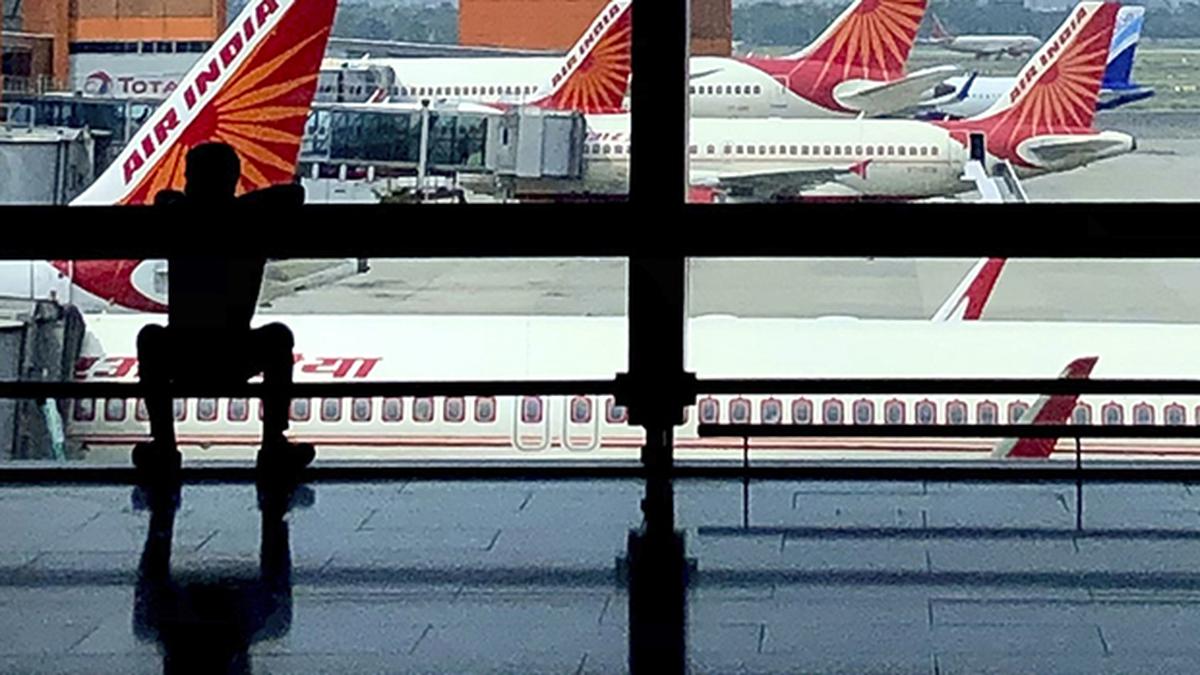Parking challenges plague Indian airlines as aircraft deliveries soar: Infrastructure struggles to keep pace

Recent orders of 500 aircraft by IndiGo, on top of its previous order of 480, and 470 by Air India along with a three-digit order by Akasa likely by the end of the year imply that by 2030 end, when a large chunk of these planes arrive, expansion of airport capacity including space for parking these planes will have to keep pace.
| Photo Credit: AP
Indian airlines await the delivery of almost 1,500 aircraft over the next 7 to 12 years. But at half that fleet size today, they often grapple with parking challenges for their aircraft.
Two of the biggest airports – ie, in Delhi and Mumbai – used as hub airports for flight operations by various Indian airlines as well as bases for their pilots and cabin crew, have a combined parking capacity of 364 aircraft for the close to 700 planes among them.
Recent orders of 500 aircraft by IndiGo, on top of its previous order of 480, and 470 by Air India along with a three-digit order by Akasa likely by the end of the year imply that by 2030 end, when a large chunk of these planes arrive, expansion of airport capacity including space for parking these planes will have to keep pace.
There are 233 parking stands in Delhi for narrowbody and widebody planes, according to the Aeronautical Informational Publication, and 131 for narrowbodies in Mumbai. An airline executive said that airlines such as Air India, IndiGo and Vistara that control 85% of the market are able to avail only about half the parking capacity of what they would like to have in order to be able to plan all their flights in a commercially viable manner. Delhi and Mumbai airports account for one in three domestic and international flights.
The lack of night parking stands often forces airlines to fly the last flight of the day to smaller cities such as Ahmedabad (the alternative airport for Mumbai) and Lucknow (alternative for Delhi), which are unlikely to record high seat occupancy or command airfares at those hours as high as they would on metro-to-metro flights.
“These are some of the forced measures we use; this is an additional financial burden on the airline as only the most price-sensitive customers will opt for such flights,” said an executive in the network planning team of an airline.
Alternatively, airlines also deploy their aircraft for red-eye flights (late night departure and early morning arrival) such as a three-hour-long Delhi-Chennai flight or to Gulf countries to obviate the need for parking space. The parking space is required to carry out maintenance checks that can take 2 to 3 hours, which are scheduled in the night for domestic flights because of the low passegnger demand, explained another official handling operations at an airline.
The grounding of almost 120 planes with different airlines due to scarcity of spares and engines, of which “2-3 dozens” are in Delhi alone, has further worsened parking challenges.
‘Worsening problem’
“The parking challenge may continue to worsen as more deliveries happen in the course of this decade, and could also impact an airline’s network planning. They will continue to be forced to explore extra rotations (flying to and fro) from the main airports just to ensure they can find parking stands.
The Airport Economic Regulatory Authority may also raise parking fees in the coming years. We may also see airlines choosing to park outside India which may not be the most optimal choice from a commercial or operational perspective. “So, the question is whether infrastructure will develop at pace with fleet growth at important airports, and at what cost this growth will happen,” Arvind Chandrasekhar, head of the Network and Fleet Management practice at Lufthansa Consulting told The Hindu.
Several airports around the country, though, are on an expansion mode. Delhi’s Indira Gandhi International airport will get an expanded Terminal 1 by September, and the Noida International Airport in Jewar will become operational by 2024 end and provide 25 parking stands. Mumbai is expected to get Navi Mumbai airport, and the Bengaluru airport has also been fast enhancing its capacity; the stands for narrowbodies have climbed from 92 in 2018 to 142, and will go up by another 56 by 2028. Kolkata and Chennai will see new terminal buildings The Hyderabad airport will see an expansion of its terminal building along with additional infrastructure on the landside and the airside.
For all the latest business News Click Here

